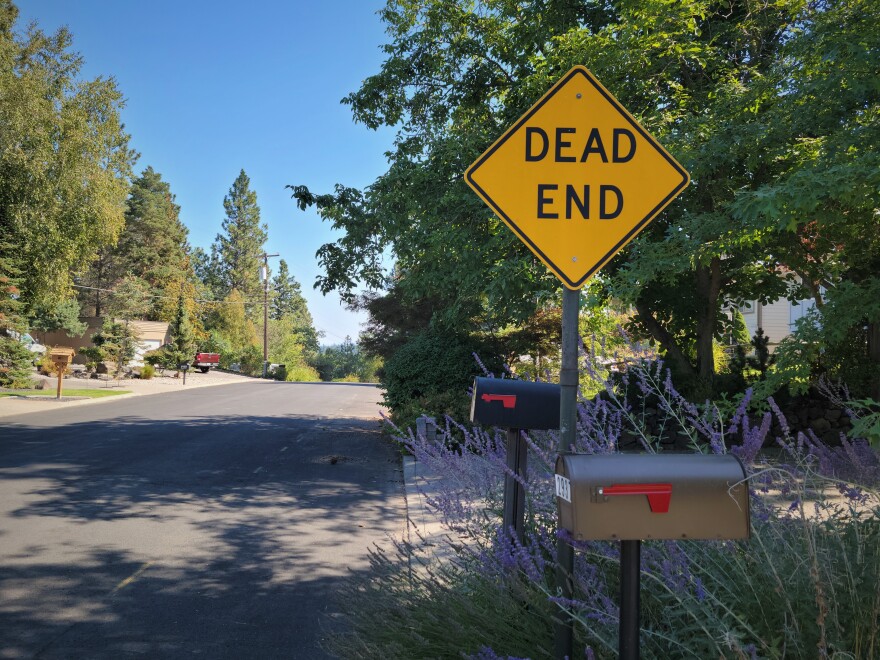The Spokane City Council recently approved a six-month moratorium pausing most development in the Latah, Grandview and Thorpe neighborhoods southwest of downtown.
Those areas are missing key infrastructure, which residents and state transportation officials said is causing safety problems and congestion.
Molly Marshall’s house in the Grandview neighborhood is hard to find. It’s at the end of one of many dead-end streets and there are no sidewalks near her home. She said she’s luckier than some of her neighbors, because on most days, she can reach the rest of the city of Spokane without crossing a major highway.
“Most of our neighborhoods funnel out onto 195,” she said, “We use that to get to the places we need to go because we do not have public transportation, everybody in the whole entire Latah Valley commutes.”
US 195 connects Spokane with southeastern Washington. It’s a major freight pathway. Marshall said she’s concerned about safety. Most neighborhoods in the Latah Valley are at risk for wildfire, and more growth could slow down fire department and ambulance response times. And most of the ways out are also high-risk accident areas -- not a great situation if a quick evacuation is ordered.
Mike Gribner is the Eastern Washington regional administrator for the state Department of Transportation.
He said the lack of connection between the neighborhoods and the rest of Spokane’s street system, has troubled the agency for decades. He said in the 90s, before many of the current developments were built, the state asked the city for a plan.
“There was a full design study, a design access hearing, a legal process that took place that codified all that,” Gribner said. “It was put in the comp plan, a bunch of other things that took place that led us to believe that had been solidified, but for the most part, those projects were never built.”
Gribner said traffic has doubled on 195 since then, and he anticipates it will double again if no new streets are built to connect neighborhoods.
“We as DOT looked down the road quite a bit and do planning for future concerns, that's deeply concerning because it’s not functioning well now and there's a lot of safety issues now.”
Residents of the Latah Valley including Kai Huschke, said the challenges they’re facing go beyond traffic. They don’t have their own library, schools, or community centers. They’re also concerned about future emergency response times.
“You could have the world’s best road system, but if you don't have fire response, or police response, or all the other things that make a neighborhood worth living in, what's the point?” he said.
Spokane City Council President Breean Beggs said the six-month development moratorium is designed to give the city time to adjust impact fees, which is what developers pay to cover the stress on infrastructure caused by their projects. Beggs said the fee hikes alone won’t solve the infrastructure challenges. He hopes the state will pitch in.
“It’s a win-win for them,” Beggs said. “This will save them lots more money in the long-run if they spent money on us, on our projects.”
He said a street network in the city of Spokane is much cheaper than the state redoing the I-90 and 195 junctions.
But the $90-million needed to build a street network doesn’t touch the other infrastructure challenge the Latah Valley neighborhoods struggle with: lacking their own fire station.
Beggs said the city is having a conversation about creating water and sewer impact fees, and how to pay for more fire resources in the neighborhoods. He said when the moratorium ends, several developments will have what they need to go forward. But that will likely strain an already stretched system.
“We’re doing a pretty big $400,000 study on what fire stations we need, and everyone agrees we need more fire services there,” Beggs said. “Now, especially if we add a thousand or so units we will. But figuring out how to pay for that is challenging.”

